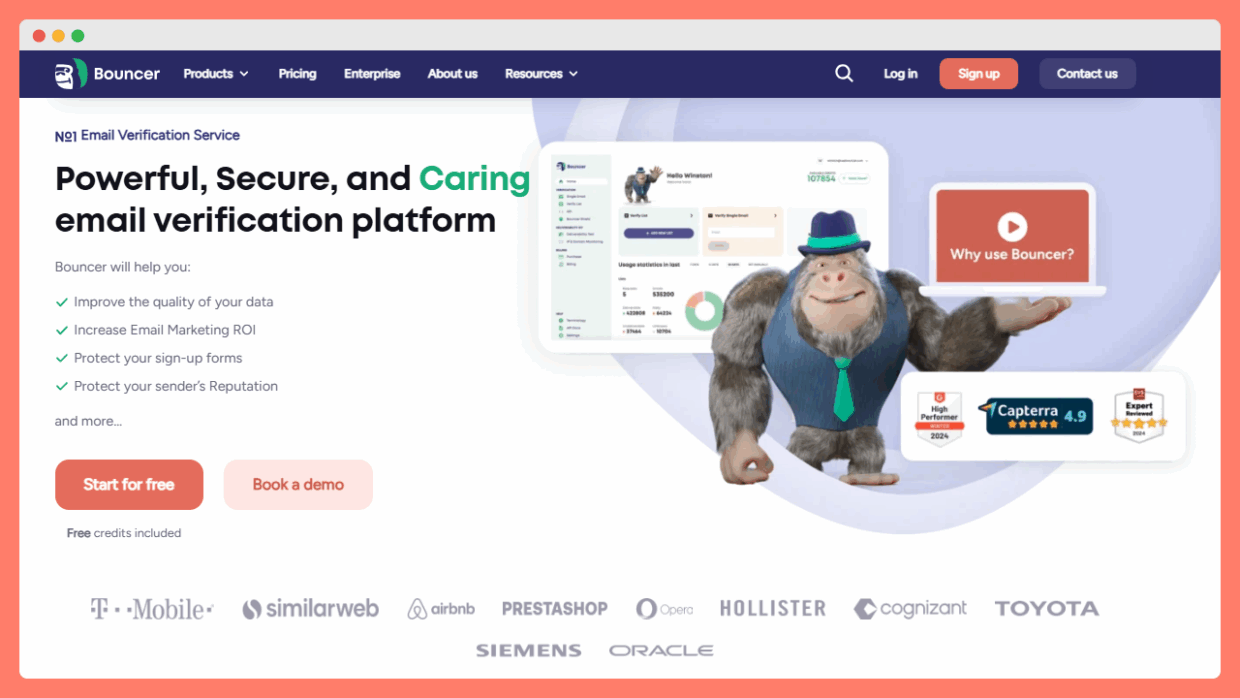Apple’s Mail Privacy Protection changed the story. It preloads images before a person even opens the email. That means you could be counting “opens” from people who never saw your message.
And it doesn’t stop there. New privacy updates like Link Tracking Protection make it even harder to know who’s actually engaging.
So now, marketers face a shift. Open rates don’t tell the full story anymore.
To really understand if your emails reach people, and matter to them, you need to look deeper.
Let’s talk about the metrics that truly show what’s going on inside the inbox.
The decline of open rates as a reliable metric
I still remember the days when open rates felt like gospel. Every campaign I sent started and ended with that number. If it looked high, I’d celebrate. If it dropped, I’d panic. But that simple measure doesn’t tell the truth anymore.
Apple changed the rules with its Mail Privacy Protection. Instead of tracking real opens, Apple preloads every image, even when users never touch the email. It means half your audience might “open” without ever seeing your subject line.

Then came Link Tracking Protection, hiding click data in some cases. The result? Inflated numbers that make marketers feel safe but mislead them about what’s really working.
According to Validity, these privacy updates created a “noisy” layer of false engagement.
And Bouncer’s latest deliverability report backs that up, showing average open rates still hover around 37%, but inbox placement can drop below 83%.
So a high open rate doesn’t mean your message even reached the inbox, let alone caught attention.
This shift hurts decision-making. You might keep sending to inactive contacts, thinking they’re engaged, when in reality they’re ghosts.
You might change subject lines chasing fake results. The truth is, open rates used to measure curiosity. Now they mostly measure technology.
That’s why smart marketers are changing what they track, looking for deeper signals that show real human engagement instead of automated noise.

Alternative metrics that better predict deliverability and engagement
Once you stop chasing opens, you start seeing what really matters.
Deliverability isn’t about how many emails were “sent” but how many actually made it to the inbox, as well as how people reacted once they got there.
Let’s start with inbox placement rate. Many senders still confuse it with delivery rate, but they’re not the same.
- “Delivered” means the message didn’t bounce.
- “Inboxed” means it avoided spam.
That difference decides whether anyone even sees your content. According to Bouncer’s 2025 statistics, anything above 89% inbox placement is good, while 95% or more is excellent. Yet many SaaS senders sit closer to 80%, quietly losing one in five emails to spam filters.
Then comes the click-to-open rate (CTOR) – a cleaner signal of interest. It measures how many people clicked after opening.
Validity calls it a better gauge of relevance, since fake opens don’t trigger clicks. Bouncer’s research shows average CTOR sits around 5.6%, but top performers reach 10% or higher when the content truly connects.
Spam complaint rate tells the other side of the story. Even a rate above 0.1 % can damage your sender reputation and drop inbox placement. It’s a small number with a huge impact.
And beyond clicks, there are human engagement signals: replies, forwards, read time, and conversions. These are hard to fake. When someone writes back or spends time reading, that’s proof your message reached the right person.
In 2026, these are the numbers that will matter: where your email lands, what people do next, and how often they come back.
| Metric | Formula | What it measures | Good / benchmark value (2025) |
| Inbox placement rate (IPR) | (Emails delivered to inbox ÷ Total emails sent) × 100 | How many emails reach the inbox (not spam) | 89% = good, 95%+ = excellent |
| Delivery rate | ((Emails sent − Bounced emails) ÷ Total emails sent) × 100 | How many emails were successfully delivered (not bounced) | 98%+ |
| Click-to-open rate (CTOR) | (Unique clicks ÷ Unique opens) × 100 | How many openers clicked a link | 5.6% average, 10%+ = top performance |
| Spam complaint rate | (Spam complaints ÷ Emails delivered) × 100 | How many recipients marked the email as spam | Below 0.1% |
| Reply rate | (Replies received ÷ Emails delivered) × 100 | How often people reply to your email | 2–5% (varies by campaign) |
| Forward rate | (Forwards ÷ Emails delivered) × 100 | How often your email is shared with others | 0.2–1% |
| Read time | Average time recipients spend viewing the email | Depth of engagement (attention) | Over 8 seconds = engaged |
| Conversion rate | (Desired actions ÷ Emails delivered) × 100 | How many recipients completed your goal (e.g., signup, purchase) | 1–3% for marketing emails |
Tools and techniques for tracking these metrics
You can’t fix what you can’t see. That’s the real challenge with deliverability today.
Open rates once gave an easy, if shallow, sense of performance. Now you need sharper tools to spot where your emails really land (and why).
Start with seed testing. Think of it as sending your campaign to a small group of monitored inboxes across Gmail, Outlook, Yahoo, and others.
It shows exactly how many land in the inbox or vanish. When you run these tests regularly, patterns appear, like Gmail tightening filters after weekend blasts or Outlook reacting to heavy links.
What is a seed list, and why do you need to create one?
Next up, Gmail Postmaster Tools and Microsoft SNDS. They’re free and worth gold. They show spam complaints, domain reputation, authentication quality, and delivery errors. If you see red zones in these dashboards, you know your domain’s trust is slipping.
What is a Google Postmaster Tool, and how to use it?
Then there’s reputation tracking. Tools such as Sender Score or internal IP monitors help keep tabs on your sending identity. They show whether spam traps or high bounce rates are dragging you down. Remember that even a 1% increase in invalid addresses can cut inbox placement by up to 10%.
Finally, look beyond the email client. Track post-click behavior, such as who:
- visits your site,
- signs up,
- or buys something.
Conversions, not opens, tell you which messages build real relationships.
The best senders treat monitoring like hygiene: something done daily, not occasionally. Data doesn’t lie, but you have to measure the right parts of the story.
Practical implications for marketers
Once you stop relying on open rates, your reports start to look different, and more honest. It might feel strange at first, seeing smaller numbers where you once saw inflated wins. But those smaller numbers tell the truth, and truth helps you grow.
The first step is to rebuild your dashboards. Move open rates to the background and spotlight metrics like inbox placement, CTOR, and spam complaints. Add unsubscribe and bounce trends too. These show the real health of your list, not the vanity of a single percentage.
Next, change how you test. Many marketers still A/B test subject lines for open rates. In 2026, that’ll be a waste of data. Instead, test based on clicks, replies, or conversions. If one subject line drives 20% more clicks, that’s the winner, not the one Apple preloaded first.
Segment smarter. Keep your engaged audience close and slowly pause or re-engage cold contacts. People who haven’t clicked in months drag your reputation down. Many senders now run quiet reactivation campaigns or sunset flows every six months to protect their domain health.
And don’t forget the technical side. Maintain authentication with SPF, DKIM, and DMARC. Validity reports that domains using all three see stronger inbox rates. It’s like sending mail with a real signature instead of a blank envelope.
The big shift? Success in deliverability is now about quality, not quantity. Fewer sends, better targeting, cleaner data. That’s what keeps you out of spam and in people’s minds.
Reputation building blocks
Email reputation is like credit. It’s built slowly, through trust and consistency, and one mistake can cost you months of progress.
Think of it in two layers: domain reputation and IP reputation. Your domain shows who you are, while your IP shows where your mail comes from. Both are tracked by mailbox providers, who judge your history every time you send. If they see low engagement or too many spam flags, your next campaign sinks before it starts.
Clean lists are your best defense. Contact lists can decay by 25-30% each year, which means old addresses quietly damage your reach. Removing bounces, spam traps, and unresponsive contacts keeps your sender identity healthy. A clean list is not a smaller audience, but it’s a real one.
Then comes sending consistency. Don’t surprise inboxes with random spikes or long silences. Predictable sending builds trust. The same goes for volume as steady flows beat sudden bursts every time.
Content still plays a role, too. People react to clarity, not tricks. Use a familiar sender name, clear purpose, and plain, human language. The more your message reads like something a person would write, the more inboxes will treat it that way.
Deliverability success doesn’t happen by luck. It’s a pattern built from habits that respect your readers and the inboxes guarding them.
Conclusion & recommendations
Open rates had their moment. They made marketers feel in control. But that era is gone. Privacy updates turned opens into noise, and pretending otherwise only slows your growth.
Today, real deliverability lives in data you can trust: inbox placement, CTOR, complaints, replies, conversions. These numbers don’t lie. They show how your audience behaves, not how your software counts.
If you’re ready to stop guessing, here’s where to start:
- Audit your reports. Move open rates aside and focus on inbox placement and engagement.
- Check your reputation. Watch complaint and bounce trends weekly.
- Clean your list. Even 1% of bad addresses can sink inbox placement by up to 10 %.
- Use a reliable verifier. A tool like Bouncer keeps your list healthy and your domain trusted. You can try Bouncer for free and see how clean data instantly improves deliverability.

Remember, deliverability is a long game. It rewards senders who respect the inbox and their readers. Keep your lists clean and your focus on people. The rest will follow.


